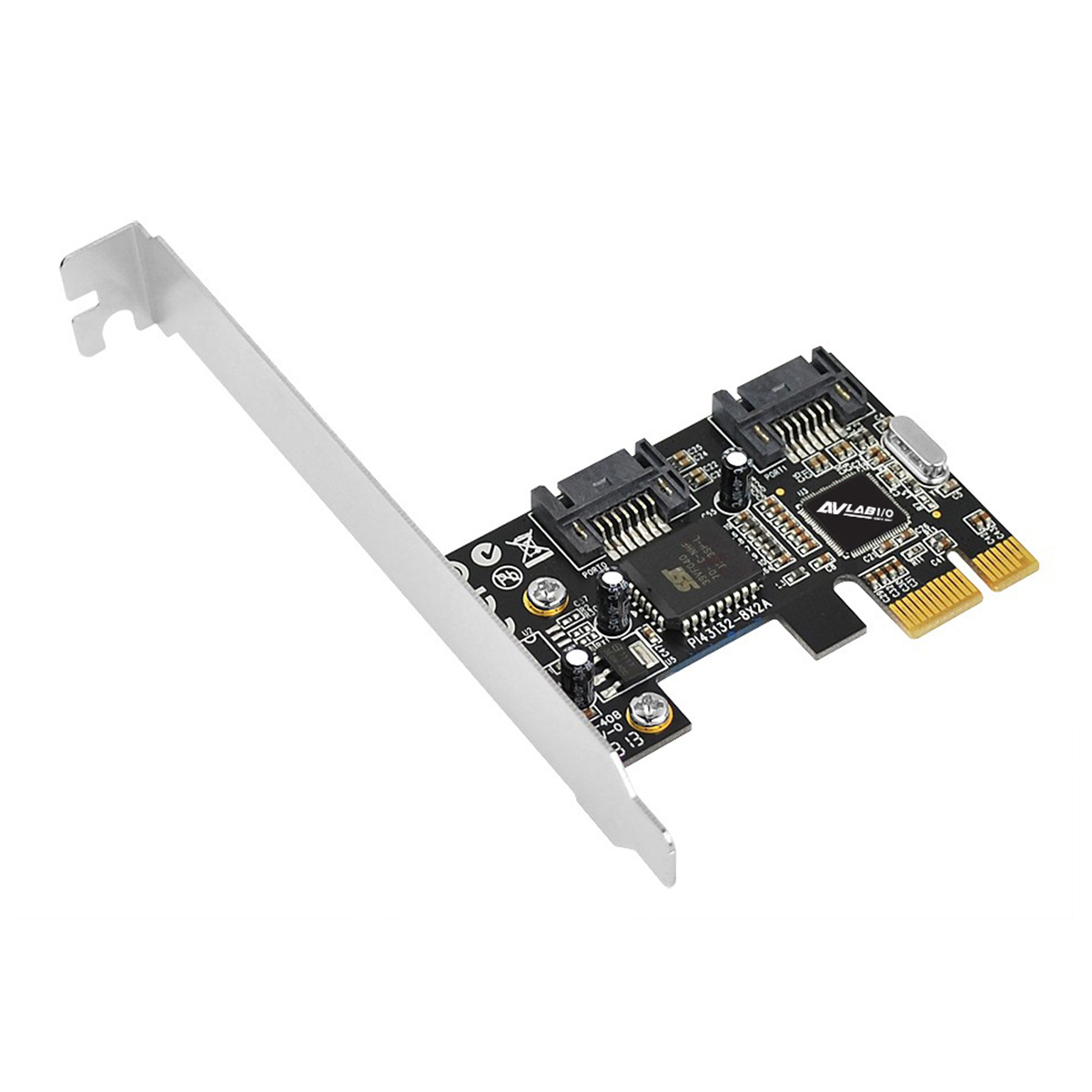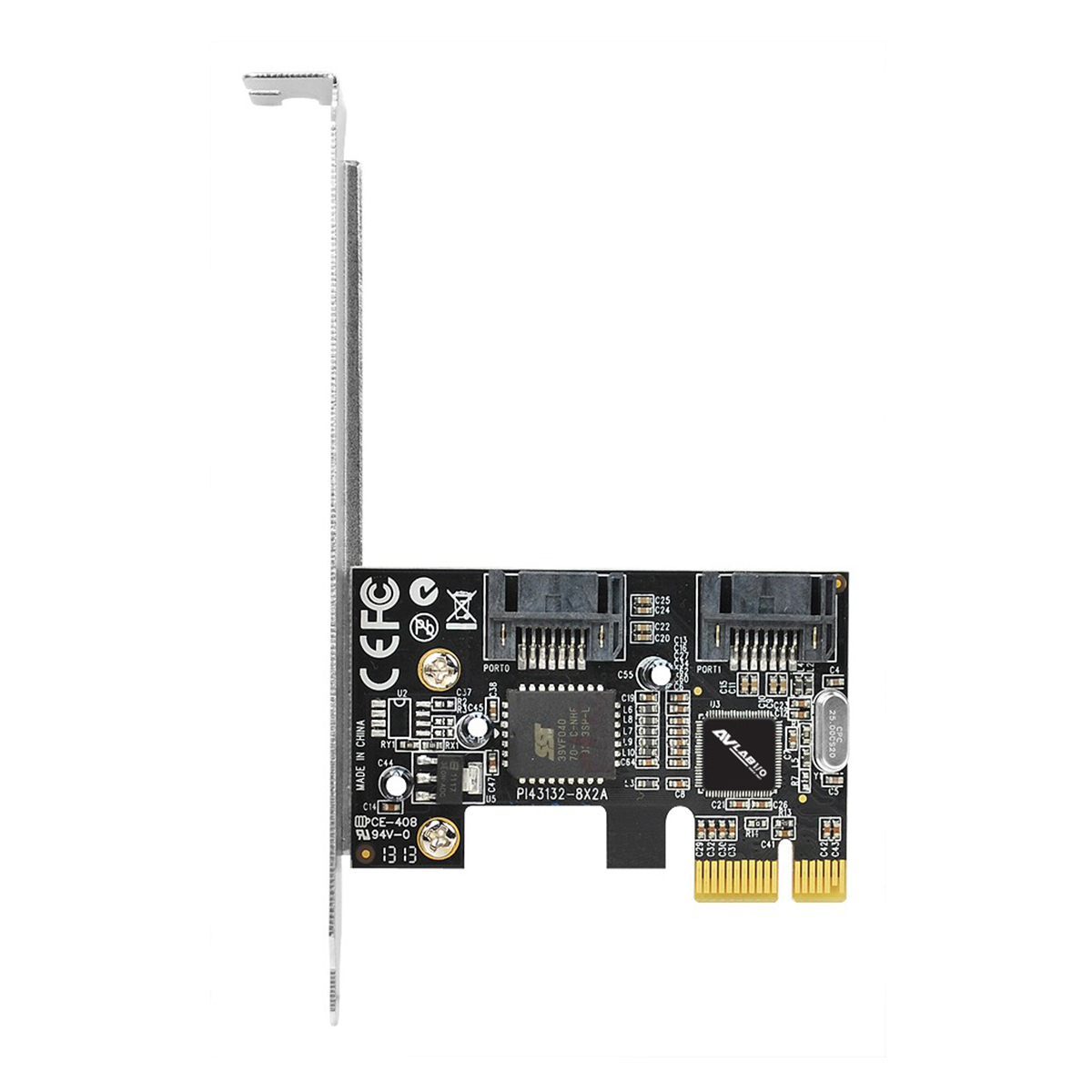- AVLAB-SC04-1
- AVLAB 2-Port SATA II PCIe, 3Gbps, Internal Serial ATA, Dual Profile Bracket
■ PCI Express 1-lane (x1) SATA II adapter works with PCI Express slots with different lane width ■ Installs in any available PCI Express slot ■ Supports two independent Serial ATA channels ■ Dual profile design to work with full height and low profile chassis with included brackets
Highlights
PCI EXPRESS
PCI Express 1-lane (x1) SATA II adapter works with PCI Express slots with different lane width
DUAL SATA SUPPORT
Supports two independent Serial ATA channels
FULL HEIGHT AND LOW PROFILE SUPPORT
Installs in full height and low profile chassis with included brackets
Specification
Chipset: Sil3132
Bust type: PCI Express x1
Port type: Two internal SATA II ports
Compliant with PCI Express Base Specification Revision 1.0a
Compliant with Serial ATA 1.0a specification with support for full complement of SATA II optional features
Installs in any available PCI Express slot
Supports data transfer rates up to 3Gb/s (300 MB/s)
Supports 48-bit LBA and verified to work with up to 4TB drives
Integrated Serial ATA Link and PHY logic
Supports Native Command Queuing (NCQ), Non-zero offsets NCQ, and Out-of-order data delivery NCQ
Independent command fetch, scatter/gather, and command execution
Connectors
■ With full height bracket: 2x 7-pin, SATA, Plug, Output
Products
■ Dimensions: 5.12" (W) x 3.03" (H) x 0.79" (D)
■ Weight: 0.08lbs
Environmental conditions
■ Operating temperature: 32 to 131 degrees F (0 to 55 degrees C)
■ Operating humidity: 20% to 80% RH (non-condensing)
■ Storage temperature: 14 to 158 degrees F (-10 to 70 degrees C)
Certifications/Standards: FCC, CE, RoHS
Warranty: 1 years limited
Country of origin: China
FAQ
- How do I confirm that Windows detects my expansion card?
- To confirm that Windows detects your expansion card, complete the following: Press the Windows key+R, type devmgmt.msc, and press Enter. In Device Manager, under the appropriate heading, confirm that your expansion card is listed and that there isn't an exclamation mark next to it. For example, a RS-422/485 controller card would be under Ports (COM & LPT)
- How do I confirm that Windows detects my USB device?
- To confirm that Windows detects your USB device, complete the following: Press the Windows key+R, type devmgmt.msc, and press Enter. In Device Manager, under the appropriate heading, confirm that your expansion card is listed and that there isn't an exclamation mark next to it. For example, a USB device would be under Universal Serial Bus controllers.
- How can I make sure my serial port is working in Windows?
- To check whether or not an RS-232 serial port is working, perform an RS-232 loopback test by doing the following: If your serial port is not female, convert it by taking a female/female cable or gender changer and plugging it into the serial port. Take a metal paperclip or wire and cross pins 2 and 3. If you look closely at the female end, the pins should be numbered. Open a telnet session on the COM port number of the device that you are testing. Note: To open a telnet session on the COM port, you need a telnet client like PuTTY or Hyper Terminal. Windows XP comes with Hyper Terminal. When the session is open, anything you type into it you should see. The loopback test fails when you cannot see what you are typing. If the loopback test fails, make sure that the serial cable or gender changer that you are using works and that the adapter is in the correct port.





